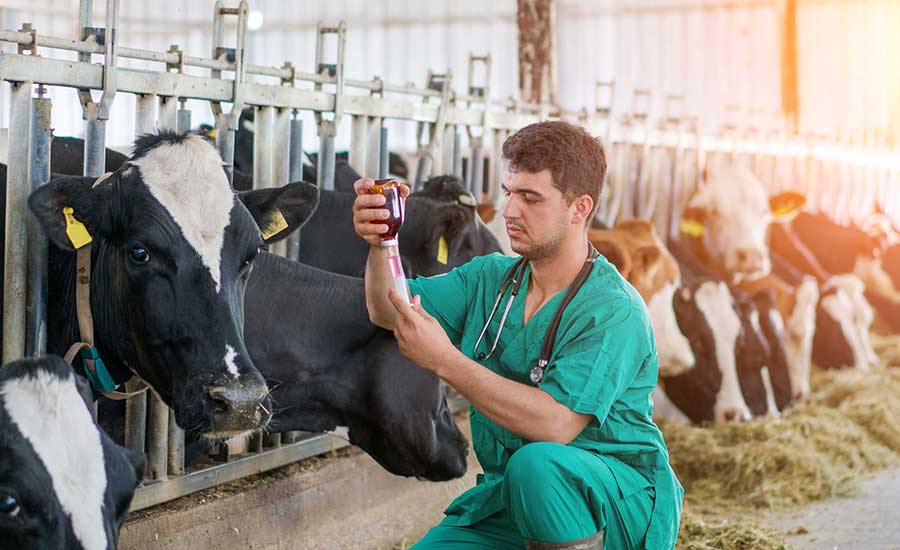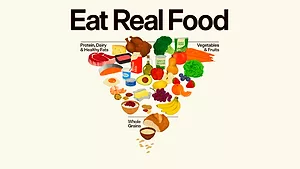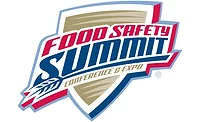Paradise Lost: The Impact of the Emergence of Antimicrobial Resistance on Food Safety
June 12, 2023
Paradise Lost: The Impact of the Emergence of Antimicrobial Resistance on Food Safety
June 12, 2023Video credit: andresr/Creatas Video via Getty Images
Antimicrobials, as the name implies, are compounds used against microorganisms that are deemed harmful or undesirable. The latter includes disease-causing microorganisms that plague humans and other animals, causing mortality and morbidity throughout history. Therefore, antimicrobials have been regarded as essential tools in the fight against infectious diseases. The importance of these compounds was made evident after the accidental discovery of the antibiotic, penicillin, by Sir Alexander Fleming in 1928. Antibiotics are antimicrobials that specifically target bacteria. They are broadly defined as compounds that are conventionally produced by or derived from microorganisms and that have the capacity to inhibit the growth of or destroy certain bacterial cells. Antibiotics were first prescribed to treat serious human infections in the 1940s and have positively impacted human wellbeing, saved millions of lives to date, and become a cornerstone in modern medicine. Relatively inexpensive to manufacture and easy to use, it is no secret that antibiotics have been referred to as "miracle drugs" and have been credited with astonishing successes, such as contributing to extending life expectancy worldwide and even winning World War 2 by providing a treatment for wound infections in Allied soldiers.
Similarly, antibiotics were applied to veterinary medicine and agriculture (Figure 1). In fact, antibiotics were introduced to feed for food animal production as early as the 1940s. Antibiotics have been conventionally used in food animals to treat clinical diseases (therapy), to prevent and control common disease events (prophylaxis and metaphylaxis), and to enhance animal growth (growth promotion). Due to these advantages, antibiotic use has been adopted in the production of food animals in the U.S., throughout the developed world, and also in lesser-developed countries.

Humanity basked in the power of antibiotics over infectious disease that wreaked havoc on human and animal health, and the threat of "simple" bacterial infections turning deadly was largely thought to be relegated to the history books. However, those with intimate knowledge of antibiotics knew better. A potential problem arose that could prove to be the undoing of these miracle drugs and threaten the newly found bliss in the fight against bacterial diseases.
Famously, Alexander Fleming warned during his Nobel Prize acceptance speech for his discovery of penicillin, "I would like to sound one note of warning… There may be a danger, though, in underdosage. It is not difficult to make microbes resistant to penicillin in the laboratory by exposing them to concentrations not sufficient to kill them, and the same thing has occasionally happened in the body. The time may come when penicillin can be bought by anyone in the shops. Then, there is the danger that the ignorant man may easily underdose himself, and by exposing his microbes to non-lethal quantities of the drug, make them resistant. Here is a hypothetical illustration. Mr. X. has a sore throat. He buys some penicillin and gives himself not enough to kill the Streptococci, but enough to educate them to resist penicillin. He then infects his wife. Mrs. X gets pneumonia and is treated with penicillin. As the Streptococci are now resistant to penicillin, the treatment fails. Mrs. X dies. Who is primarily responsible for Mrs. X's death? Why, Mr. X, whose negligent use of penicillin changed the nature of the microbe. Moral: If you use penicillin, use enough…"
Fleming warned us early on that bacteria can become resistant and antibiotics will cease to work. In hindsight, the latter made sense and was expected. After all, antibiotics were mainly isolated from microorganisms; that is, they existed in nature. As microorganisms struggle for survival, some have evolved weapons and strategies that allow them to compete for resources against other microorganisms. One approach is to produce antibiotics to kill the competitors and win over the limited resources available in a niche. In nature, some competitors, in turn, have evolved mechanisms that allow them to survive (resist) these antibiotics. Therefore, antibiotic resistance is also a natural phenomenon. With that said, the overreliance on antibiotics and their misuse and abuse in human and veterinary medicine and agriculture have accelerated the emergence and spread of bacteria that are resistant to these drugs, more rapidly than expected. Today, the emergence and spread of antibiotic-resistant bacterial pathogens pose a grievous threat to human and animal welfare across the world, hailing the resurgence of untreatable, deadly infections. Notably, the WHO recognizes antibiotic resistance as one of the ten top health challenges facing humanity in the 21st century.
In 2016, a report known as the O'Neill report, commissioned by the UK government and the Wellcome Trust, declared ominous predictions on the scope and impact of antimicrobial resistance (AMR). The report predicted that 300 million people would die prematurely due to drug resistance in the next 35 years (by 2050) worldwide. Furthermore, the report provided an estimate of the toll of AMR on the economy, predicting that the world's GDP might be 2–3.5 percent lower than it otherwise would be in 2050, which translates into a loss of $60–100 trillion USD in economic output. The report cemented the toll of AMR in perpetuating human suffering and the cycle of poverty, especially in low- and middle-income countries that have limited and/or underdeveloped public health systems.
A recent, landmark study published in The Lancet provided an updated estimate of the global burden of bacterial AMR in 2019. It was found that an estimated 4.95 million deaths and 1.27 million deaths were respectively associated with, and attributed to, bacterial AMR in 2019. These numbers are staggering and highly concerning, and they appear to affirm the predictions of the O'Neill report. In the U.S., the Centers for Disease Control and Prevention (CDC) estimate more than 2.8 million AMR infections yearly, resulting in the deaths of 35,000 people. AMR is now an imminent and severe threat that has been referred to as a "slow tsunami," a "global crisis," and a "silent pandemic."
Dangerous Liaisons? Food Safety, Antibiotic Resistance, and Food Animal Production
The elephant in the room here is the relationship between AMR and food safety. Bacterial foodborne pathogens such as Salmonella and Campylobacter can also evolve to acquire antibiotic resistance and cause hard-to-treat infections. To highlight the potential importance of AMR in food safety, selected studies that focus on Campylobacter and Salmonella are discussed below.
Looking for quick answers on food safety topics?
Try Ask FSM, our new smart AI search tool.
Ask FSM →
Looking for a reprint of this article?
From high-res PDFs to custom plaques, order your copy today!
Although most Campylobacter infections are self-limiting, severe or prolonged infections may require antimicrobial therapy under certain scenarios. In these cases, erythromycin and fluoroquinolones, such as ciprofloxacin, are usually considered the drugs of choice for treatment. Other antimicrobials, such as gentamicin, tetracycline, clindamycin, and ampicillin, may be used as alternative drugs for the treatment of systemic Campylobacter infections. Therefore, resistance of Campylobacter to fluoroquinolones and macrolides is a major concern for public health. However, numerous studies from different countries reported the isolation of antibiotic-resistant Campylobacter from poultry products. For example, a study conducted in Germany found that 42 percent and 71 percent of chicken-associated C. jejuni and C. coli were resistant to ciprofloxacin, respectively. In Poland, 47.9 percent of the Campylobacter strains isolated from poultry were resistant to ciprofloxacin in the mid-1990s (1994–1996), in comparison to 90.2 percent approximately a decade later (2005–2008).
Similarly, in the same time interval, erythromycin-resistant Campylobacter associated with poultry increased from 49.3 percent to 88.9 percent. An increase in the incidences of antibiotic-resistant Campylobacter was also observed in the U.S. Specifically, a comparison between 2001 and 2010 showed that the detection rate of ciprofloxacin and erythromycin-resistant C. jejuni on chicken carcasses at slaughter increased from 20.3 percent to 23.1 percent and from 0 percent to 10 percent, respectively. Furthermore, 49 percent and 36 percent of organically and conventionally raised retail chicken carcasses were contaminated with erythromycin-resistant Campylobacter, respectively. A study on turkeys showed that erythromycin-resistant C. coli occurred in 95.6 percent of conventionally raised birds. More recently, it was reported that turkey-associated Campylobacter isolates were resistant to tetracycline (95 percent), azithromycin (43 percent), ciprofloxacin (42 percent), and erythromycin (18 percent). In China, 99.1 percent of C. jejuni and 100 percent of C. coli isolated from broiler chickens were resistant to ciprofloxacin, while 16 percent of C. jejuni and 94.1 percent of C. coli were resistant to erythromycin, 53.8 percent of C. jejuni and 95.4 percent of C. coli were resistant to gentamicin, and 100 percent of C. jejuni and 98.7 percent of C. coli were resistant to tetracycline.
Similarly, patients with non-complicated Salmonella infections can be treated with supportive therapy without resorting to the use of antimicrobial agents. However, antimicrobials such as ampicillin, chloramphenicol, trimethoprim-sulfamethoxazole, and ciprofloxacin can be recommended for high-risk patients. It is well-known that antibiotic-resistant Salmonella occur in contaminated foods (e.g., poultry meat) and can be transmitted to humans. For example, a study reported that Salmonella serotypes that were isolated from chicken carcasses exhibited resistance to penicillin (100 percent of isolates), vancomycin (92.6 percent), erythromycin (89.7 percent), ampicillin (85.2 percent), tetracycline (67.6 percent), streptomycin (61.7 percent), neomycin (55.8 percent), gentamicin (14.7 percent), chloramphenicol (10.2 percent), cefotaxime (2.9 percent), and others. In another study that targeted Salmonella isolated from processed poultry, it was reported that 79.8 percent and 53.4 percent of the isolates were resistant to at least one antimicrobial and three or more antimicrobials, respectively. The isolates were found to be resistant to tetracycline (73.4 percent of isolates), ampicillin (52.9 percent), amoxicillin/clavulanic acid (52 percent), ceftiofur (51.7 percent), streptomycin (35.2 percent), and sulfisoxazole (21.8 percent).
It is clear that antibiotic-resistant foodborne bacterial pathogens pose a serious and elevated risk to consumers, which makes AMR a central issue in food safety. Notably, CDC's report on antibiotic resistance threats in the U.S. (2019) has listed both drug-resistant Campylobacter and non-typhoidal Salmonella under serious threats. The former was estimated to cause 448,400 infections and 70 deaths, while the latter was associated with 212,500 infections and 70 deaths in 2019.
Food animal production consumes more antibiotics than human medicine. This should not be surprising, when considering the number of animals that are required to feed an increasing human population. For example, the demand on poultry meat was estimated to be almost 128 million metric tons in 2021, representing almost an 86 percent increase in global consumption in comparison to 2001. More animals mean more antibiotics are needed to keep the animals healthy and drive production. In 2015 in the U.S., it was estimated that 70 percent of all antibiotics were consumed by animals, in comparison to 30 percent by humans. Notably, the majority of the antibiotics used in animals in the U.S. were considered medically important. Given that antibiotics are used worldwide, the amounts deployed in agriculture are staggering.
It is believed that the reliance on antibiotics in food animal production, along with misuse and abuse of these drugs has contributed, at least partially, to the emergence and spread of antibiotic-resistant foodborne bacterial pathogens. Studies have shown a close association between the prevalence of livestock-associated antibiotic-resistant bacteria in animals and humans. A similar relationship was noted between the levels of antibiotics use in animals at a population level and the prevalence of antibiotic-resistant bacteria in animals and humans. This has several public health ramifications, including:
- An increase in antibiotic-resistant foodborne bacteria will complicate the treatment of foodborne infections and diseases acquired from exposure to food animals and the farm environment
- An emergence or re-emergence of new antibiotic-resistant strains of bacteria will be seen
- The selective pressure of antibiotics in farm operations might enrich the pools of antibiotic-resistant genetic markers and increase the potential transmission of these markers off-farm (via run-off, manure, and farm waste disposal).
It has been highlighted previously that intensive animal farming operations can be a cause for the spread of antibiotic-resistance genes in an off-farm environment. Subsequently, these genes can be horizontally transferred to other non-food-animal associated bacteria, including pathogens, in the environment. Furthermore, a considerable concentration of the antimicrobial agents administered to animals might be excreted back into the environment. For example, antimicrobial residues were detected in 67 percent of water samples that were collected from surface water and groundwater resources located in the proximity of intensive poultry operations. Therefore, antibiotic runoff from food animal operations might select for antibiotic-resistant bacteria in off-farm/poultry processing niches.
It should be noted that many countries have moved to address the emergence of AMR associated with agriculture by revisiting, strictly regulating, and monitoring the appropriate use of antibiotics in food animal production.
Conventional May Not Always be Reliable: Antibiotics in Food Animal Production
The conventional applications of antibiotics in animal production are described in more detail below.
Antibiotic Therapy
The administration of antibiotics to animals or groups of animals to treat illness or infections is referred to as antibiotic therapy. The main objectives of employing antibiotic therapy in farm animals are to alleviate the symptoms and the suffering of the affected animal(s), limit the transmission of disease to otherwise healthy animals in the herd or flock, and destroy the etiological agent. As disease decreases farm animals' performance and can result in mortality, therapeutic applications are also essential components to increase profitable and humane livestock production.
Therapeutic uses of antibiotics must be under the advice and discretion of a practicing animal physician/veterinarian and require a valid prescription. In addition, in the U.S., antibiotics must be approved by the U.S. Food and Drug Administration (FDA), which monitors antibiotic use in farm animals to ensure not only the effectiveness of treatment but also the safety of the animals and associated consumable products.
Metaphylaxis and Prophylaxis
These procedures are often recommended by veterinarians for animals that are generally determined to be at an unacceptably high risk of developing a bacterial disease. For example, an animal may receive antibiotics as a precaution after surgery or trauma (prophylaxis). Also, antibiotics may be administered to whole herds or flocks that are at risk of exposure to an outbreak of infectious disease or those that have been under unfavorable conditions (metaphylaxis). Typically, metaphylaxis and prophylaxis involve administering drugs at therapeutic levels for short periods of time.
Growth Promotion
Growth promotion refers to the administration of antibiotics at sub-therapeutic concentrations, usually in an animal feed additive, over a period of time to improve the animals' physiological performance, mainly weight gain and feed efficiency. While the actual net benefit of using antibiotics in feed for farm animals is difficult to measure, this practice is likely spurred by economic gain and the need to cope with increasing consumer demands on animal proteins. The mechanisms that facilitate antibiotic-associated growth promotion are still not completely clear. However, it is thought that the growth-promoting effects of antibiotics are mediated through alterations in the normal intestinal microbial population of the animal, which result in more efficient digestion of animal feed and metabolic uptake of nutrients. In addition, sub-therapeutic doses of antibiotics used for growth promotion in farm animals might suppress some pathogenic gut bacteria, and it has been hypothesized that antibiotics lead to decreased illness, allowing weight to accumulate faster.
In comparison to other antibiotic applications in farming, growth promotion is the most controversial, for a number of reasons:
- It is regarded primarily as a method for increasing economic gain in shorter growth cycles
- The expansion of animal farming operations requires large amounts of antibiotics to be used in growth promotion
- Antibiotics used for growth promotion are not as tightly regulated as other antibiotic applications in farming
- It is thought that sub-therapeutic applications of antibiotics over a relatively prolonged period of time will exert selective pressure that allows the emergence and persistence of antibiotic-resistant pathogens that can affect animals and humans.
Consequently, government authorities in Europe, the U.S., and many other countries have adopted measures to ban the use of growth-promoting antibiotics in food animals.
Antibiotic therapy and disease prevention are tightly regulated in many countries and require a prescription from a veterinarian. Furthermore, advances in biosecurity and other antibiotic-independent interventions (notably vaccines) have effectively reduced the reliance on antibiotics in therapy and disease prevention in developed nations. In 1951, the use of antibiotics as animal feed additives without a veterinary prescription in the U.S. was approved. Many groups of antimicrobials/antibiotics (arsenicals, polypeptides, glycolipids, tetracyclines, elfamycins, macrolides, lincosamides, ionophores/polyethers, penicillins, quinoxalines, streptogramins, and sulfonamides) have been at one point registered for use as growth promoters in poultry and other food animals in Australia, the EU, and Canada. For example, in the U.S., arsenicals (arsanilic acid, roxarsone, cabarsone), polypeptides (bacitracin), glycolipids (bambermycins), tetracyclines (chlortetracycline), macrolides (oleandomycin, tylosin) and penicillins have been used as growth promoters in poultry in the past.
However, voluntarily withdrawal of antibiotics by stakeholders in the food animal industry, along with FDA's 2015 Veterinary Feed Directive (VFD), have effectively banned the use of antibiotics as growth promotors in the U.S. The VFD appeared to result in a decrease in antibiotic consumption in animal agriculture; however, a slight increase has been detected recently (in 2018 and 2019, in comparison to 2017). Notably, the EU implemented a member-nation-wide ban on antibiotics as growth promoters in animal feed in 2006. However, growth promotion is still practiced in many nations around the world, which is problematic given that AMR can be easily transmitted across national borders via human and animal movement and international food trade, among other mechanisms.
The White Council: Regulations and Recommendations
In 2015, AMR was detected in at least 70 percent of the pathogens associated with domestically acquired foodborne illnesses that occur annually in the U.S. Treatment of infections caused by antimicrobial-resistant pathogens is expensive. For example, it has been estimated that drug-resistant non-typhoidal Salmonella exerts $365 million in medical costs annually in the U.S. alone. Extrapolating these numbers on a global scale suggests the need for more mitigating interventions to control the emergence of AMR associated with animal agriculture. Despite valiant efforts by stakeholders to reduce the use of antibiotics in animal agriculture, much work is still required. For example, in the U.S., the Pew Research Center in 2021 issued the following recommendations: "The FDA needs to expedite progress toward the objectives laid out in its five-year plan to strengthen stewardship in animal agriculture. Those include the establishment of fixed, evidence-based limits on the duration of treatment for all medically important antibiotics and the finalization of guidance transitioning all medically important antibiotics to prescription-only status."
Additionally, a global coordinated effort is urgently required to tackle AMR across borders. For example, investments should be directed to support low- and middle-income countries to allow them to transition away from intensive antibiotic use in animal agriculture. Importantly, national and multinational investments in the discovery of new antibiotics and alternative interventions are critical. It is not a secret that the antibiotic discovery pipeline has significantly stalled because major pharmaceutical companies are largely focusing their investment and research efforts on other, more lucrative drugs. Finally, the following recommendations to conserve antibiotic effectiveness in humans and animals were proposed by the World Organization for Animal Health (OIE) in 2015:
- Track rates of veterinary antibiotic use, resistance, and residues through a nationwide surveillance and monitoring system
- Change incentives to discourage unnecessary antibiotic use in animals
- Educate farmers, veterinarians, and consumers on the dangers of antibiotic resistance
- Phase out the sub-therapeutic use of antibiotics in animals.
While the aforementioned interventions are predicted to be favorable, it is also argued that the spread of antibiotic-resistant pathogens might not be immediately affected. This is because mechanisms and mutations that lead to AMR and have little or no fitness costs are likely to persist in the absence of antibiotic pressure. A meta-analysis showed the latter to be true for several drug classes and species of bacteria that did not exhibit an apparent fitness cost. Regardless, it is evident that much remains to be learned to better tackle the scourge of AMR. Perhaps it is fitting to conclude by quoting John Milton's epic poem, Paradise Lost, where he wrote, "Long is the way and hard, that out of Hell leads up to light."
Issmat I. Kassem, Ph.D., M.S., CP-FS, is an Assistant Professor in the Center for Food Safety and the Department of Food Science and Technology in the College of Agricultural and Environmental Sciences at the University of Georgia. He has published more than 90 peer-reviewed articles and book chapters.






